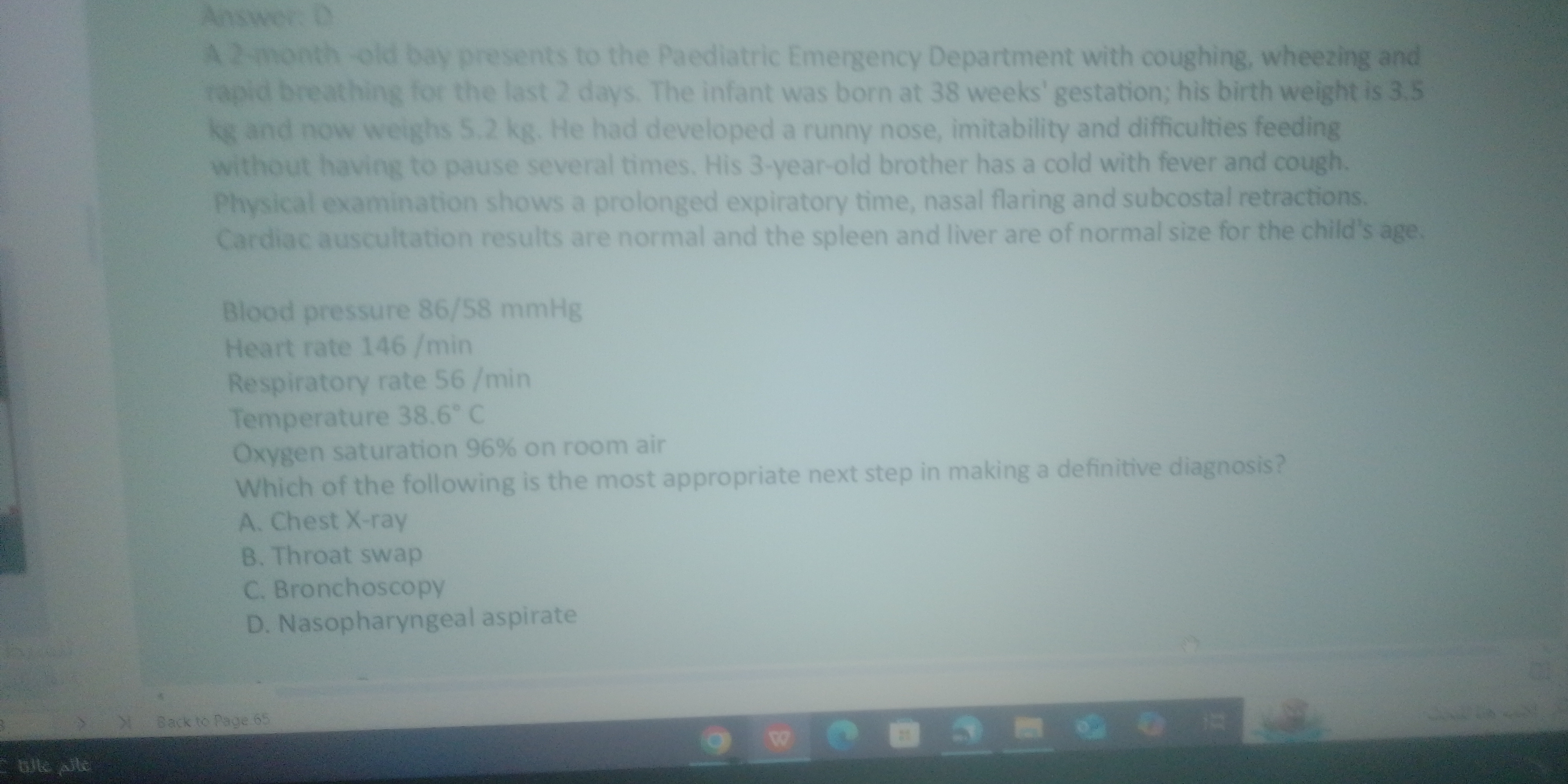Which of the following is the most appropriate next step in making a definitive diagnosis for a 2-month-old infant presenting with coughing, wheezing, rapid breathing, runny nose,... Which of the following is the most appropriate next step in making a definitive diagnosis for a 2-month-old infant presenting with coughing, wheezing, rapid breathing, runny nose, irritability, feeding difficulties, prolonged expiratory time, nasal flaring, and subcostal retractions, with the following vital signs: blood pressure 86/58 mmHg, heart rate 146/min, respiratory rate 56/min, temperature 38.6°C, and oxygen saturation 96% on room air? A. Chest X-ray B. Throat swap C. Bronchoscopy D. Nasopharyngeal aspirate

Understand the Problem
The question presents a clinical scenario of a 2-month-old infant presenting with respiratory symptoms and feeding difficulties. It asks to identify the most appropriate next step in making a definitive diagnosis, given the provided clinical information and vital signs.
Answer
D. Nasopharyngeal aspirate
The most appropriate next step is D. Nasopharyngeal aspirate.
Answer for screen readers
The most appropriate next step is D. Nasopharyngeal aspirate.
More Information
Given the infant's symptoms (coughing, wheezing, rapid breathing, runny nose, fever) and the brother's recent illness, a viral respiratory infection is suspected. A nasopharyngeal aspirate is the most appropriate next step to identify the specific virus causing the infection, such as RSV or influenza.
Tips
Differentiating upper and lower respiratory infections can be tricky. Signs of respiratory distress such as nasal flaring and subcostal retractions suggest the need for prompt intervention.
Sources
AI-generated content may contain errors. Please verify critical information